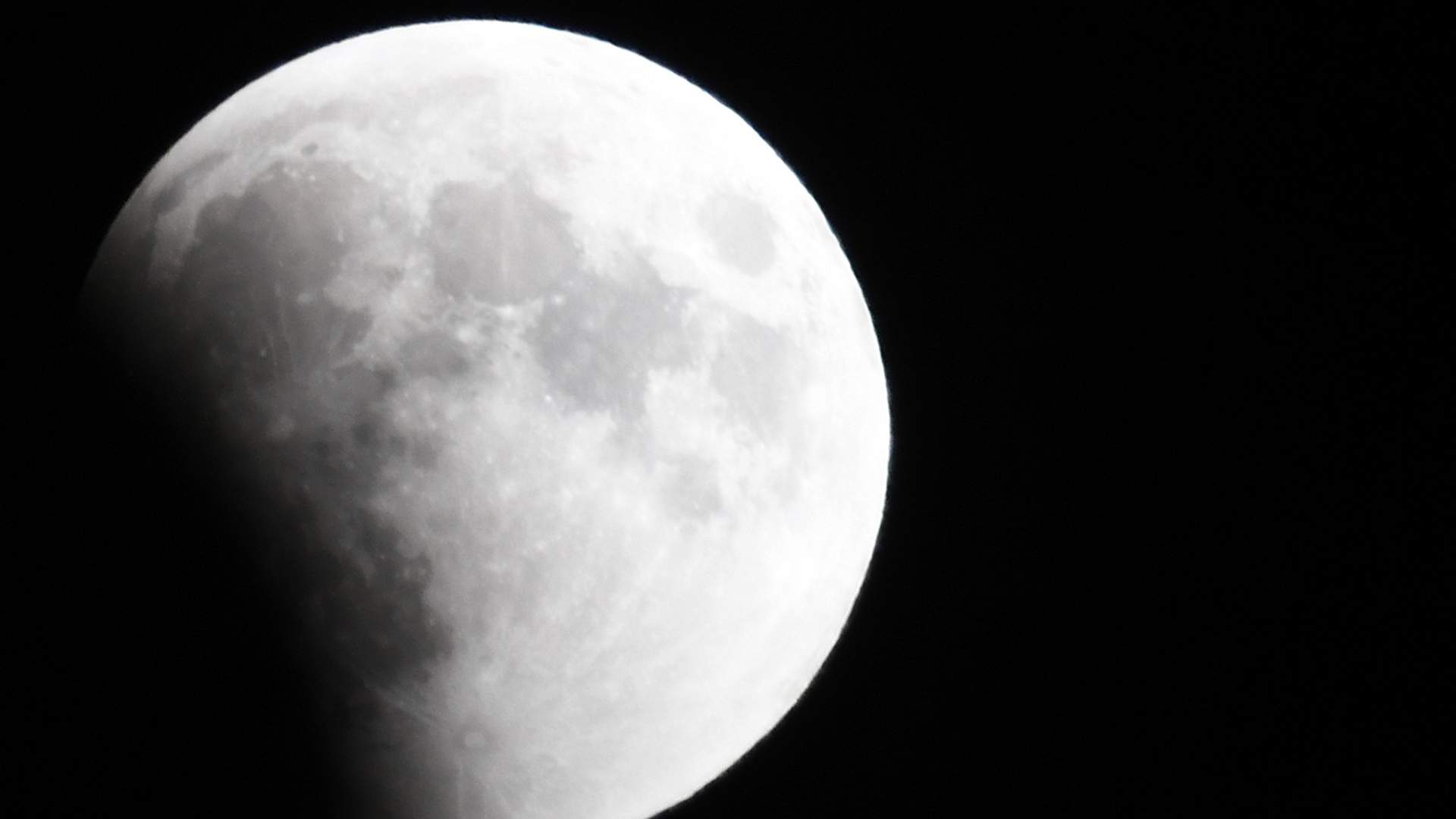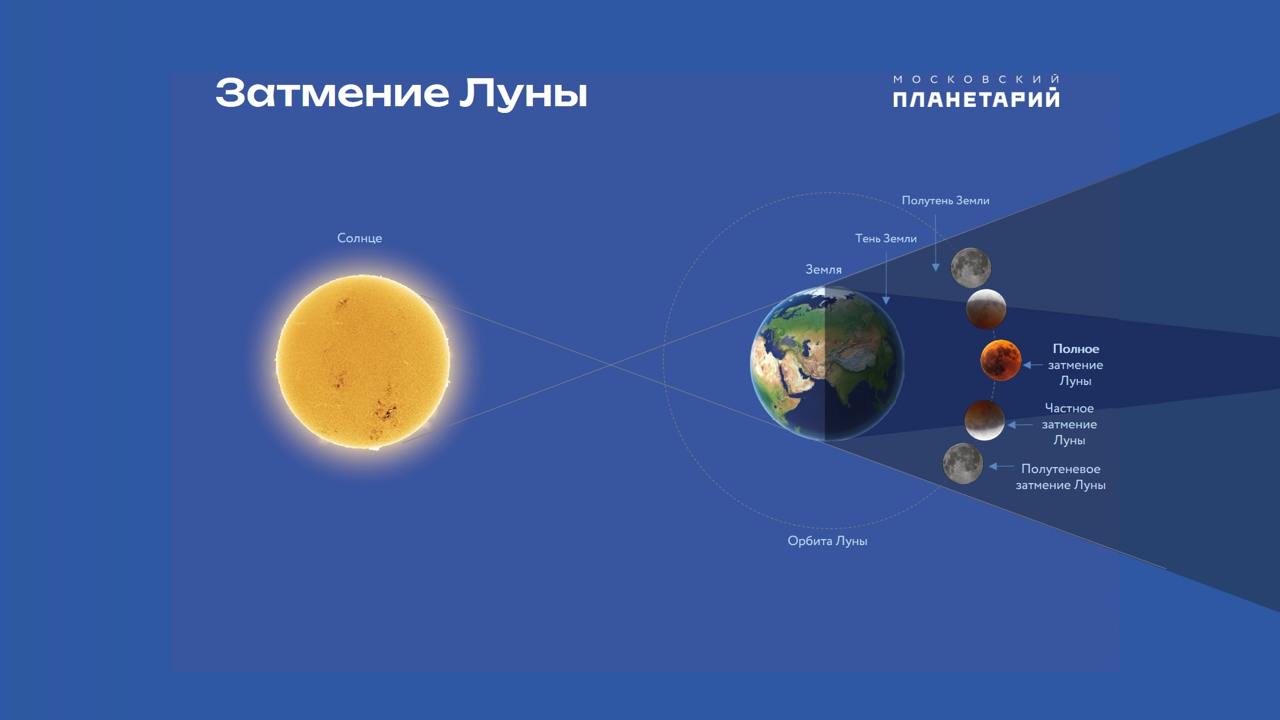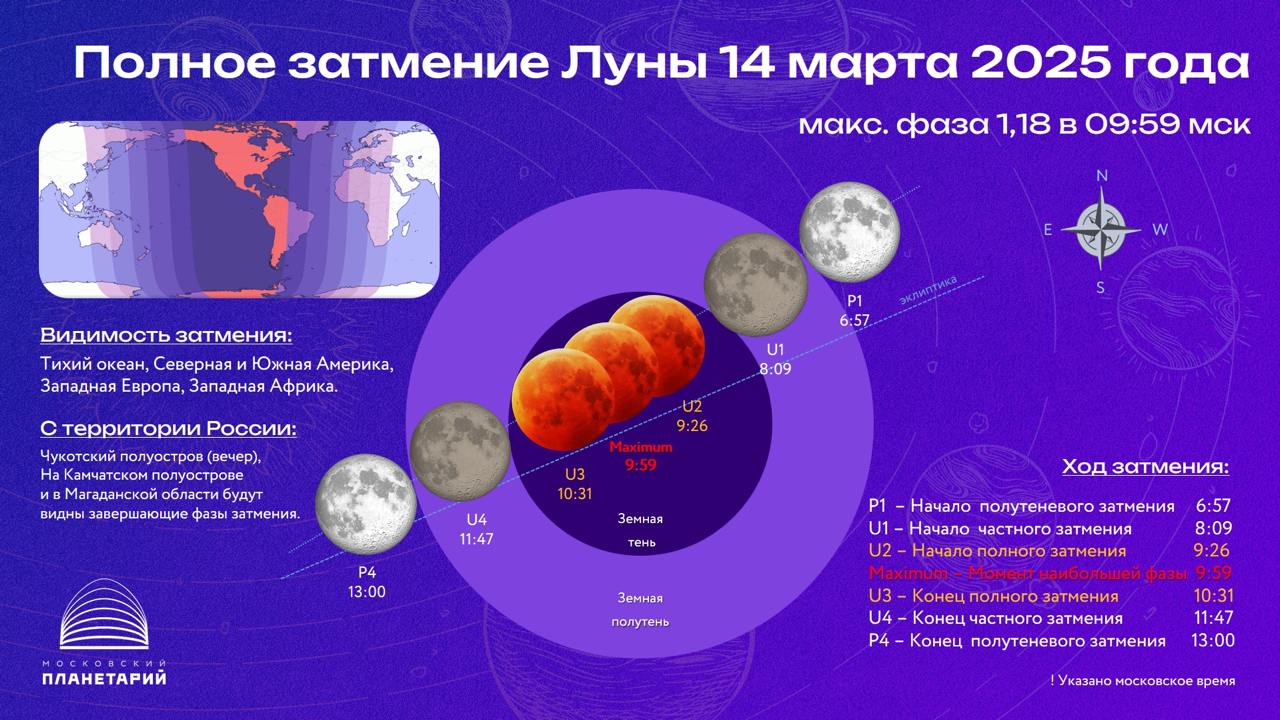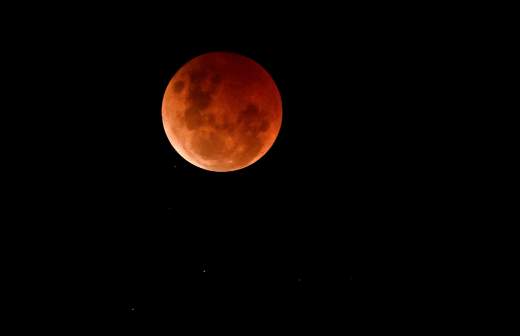- Статьи
- Local news
- The first lunar eclipse of 2025: will it be visible in Russia, at what time to observe
The first lunar eclipse of 2025: will it be visible in Russia, at what time to observe

A lunar eclipse is an infrequent astronomical phenomenon, especially when it comes to a total eclipse of the Earth's natural satellite. It is precisely such an eclipse that is expected twice in 2025, the nearest one will occur on March 14. It will open a period that is conventionally called the eclipse corridor. For more information about the astronomical phenomenon and how it differs from others, as well as where the lunar eclipse on March 14 will be visible, see the Izvestia article.
The essence of the lunar eclipse on March 14th
A lunar eclipse is an astronomical phenomenon when the Earth blocks light from the Sun partially or completely. An important feature of eclipses is that they can only occur on a full moon.
The first lunar eclipse of 2025 will be total and very colorful. In order for such a phenomenon to occur, it is necessary that the Sun, Earth and Moon line up in one line, and our planet is between two celestial bodies. In this case, the Moon is completely in the shadow of the Earth. It is important to note that the satellite does not completely disappear from the sky during an eclipse. It just turns dark red, brick, or orange.
Although the Earth blocks direct sunlight, some of the light waves are refracted in the planet's atmosphere and reach the surface of the natural satellite, coloring it in various shades of red and orange spectrum. The March eclipse and the full moon were called "bloody" because of this.
On average, two lunar eclipses occur every year, and occasionally three such astronomical phenomena can be seen in a year. At the same time, there are also years when there is not a single eclipse.
The first lunar eclipse in 2025 — how is it different from other eclipses
The main difference between a total lunar eclipse is its spectacular effect. The hue and brightness of the night star change from eclipse to eclipse, and each time you can observe almost a new picture.
In addition to the total eclipse that will occur on March 14, there are two more types: partial and penumbral. In the first case, the Moon falls into the Earth's shadow only partially, and its edge darkens and acquires a reddish hue.
During a penumbral eclipse, the natural satellite appears in the penumbra of the Earth. This type of eclipse is the most difficult to notice: The moon becomes only slightly darker than usual, and you can only see it with the help of a special device.
All lunar eclipses differ in that they can be observed on the entire hemisphere of the Earth facing the Sun at that moment. At the same time, unlike a solar eclipse, a lunar eclipse can be viewed without additional devices, since it does not pose a danger to the eyes.
Physics of the lunar eclipse
In order for a lunar eclipse to take place, a number of factors must be observed, including:
— finding a natural satellite of the Earth in a cone of shadow, or umbra (from Latin. "shadow"), or the penumbra cone ("penumbra");
— the location near the points of intersection of the Moon's orbit with the ecliptic (a large circle of the celestial sphere along which the annual movement of the Sun relative to the stars, visible from Earth, takes place), which are called lunar nodes.

Due to the size of the Earth and the average distance to the satellite, the diameter of the umbra is about 9.3 thousand km, which is much larger than the diameter of the Moon (3.5 thousand km). As a result, the moon can easily sink completely into the umbra.
Lunar eclipses can be observed from Earth from any point where the satellite is above the horizon at that moment. At the same time, the duration of eclipses also always varies, but the phase of total dimming of the satellite does not exceed 1 hour and 40 minutes in time.
Scientists also drew attention to the frequency of alternating lunar and solar eclipses. They repeat in their previous order every 18 years, 11 days and 8 hours (223 moon revolutions). This gap was named Saros and was discovered in ancient Greece.
There are 70 eclipses during each saros: 41 solar and 29 lunar. Despite the greater number of solar eclipses, they are more difficult to observe: due to the fact that the shadow of the Moon, which covers the Sun, is much smaller, it is possible to see the astronomical phenomenon only from a small area of the planet.
Note that a total eclipse of the Sun occurs about 10 times during one saros and is visible in different parts of the planet. In the same place on Earth, this astronomical phenomenon can be seen only once every 200-300 years.
If we take into account the whole of Russia, the last time a total solar eclipse was observed was on August 1, 2008. Western Siberia, in particular, Novosibirsk, became the center of observation. The next time it will be possible to see it on August 12, 2026 from the Taimyr Peninsula.
After each saros, eclipses of both luminaries begin to repeat, but their conditions change somewhat. Nevertheless, having information about the last lunar eclipse, it is possible to accurately determine the time of subsequent and previous ones.
Diagram of the first lunar eclipse in 2025
The nearest total lunar eclipse will be observed on March 14. The total duration of the phenomenon will be 6 hours and 3 minutes, but the full part — only 1 hour and 5 minutes — will take place from 9:26 a.m. to 10:31 a.m. Moscow time. In this case, the satellite will pass through the northern part of the Earth's shadow.
In general, the chronology of the event will look like this:
— 6:57 a.m. Moscow time. The beginning of the penumbral eclipse;
— 8:09 a.m. Moscow time. The beginning of a private eclipse;
— 9:26 a.m. Moscow time. The beginning of the total eclipse;
— 9:59 a.m. Moscow time. The moment of the greatest phase;
— 10:31 Moscow time. The end of the total eclipse;
— 11:47 Moscow time. The end of a private eclipse;
— 13:00 Moscow time. The end of the penumbral eclipse.

The lunar eclipse on March 14 will be visible in many parts of the world, including the Pacific Ocean, North and South America, Antarctica, Alaska, Western Europe and West Africa.
In Russia, it will be seen only by residents of the Chukchi Peninsula and Kamchatka, as well as residents of the Magadan region. However, not all phases of the eclipse will be visible. You won't be able to see the cosmic phenomenon in Moscow: the moon will be below the horizon at this time.
Переведено сервисом «Яндекс Переводчик»






